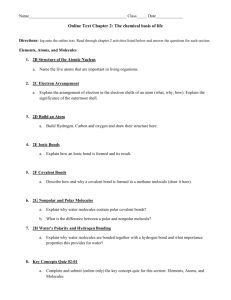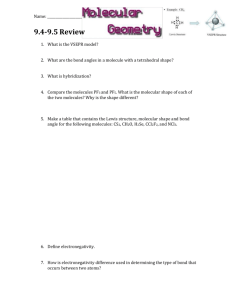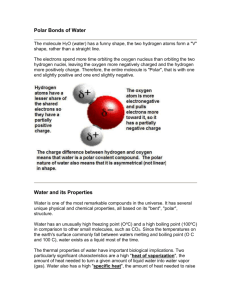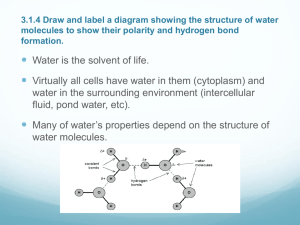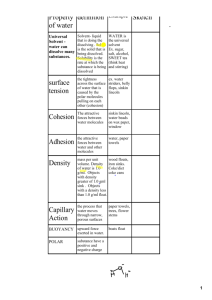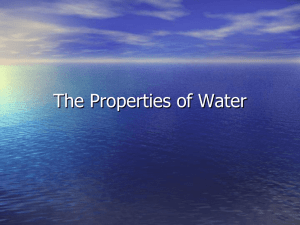2.2 Water
advertisement
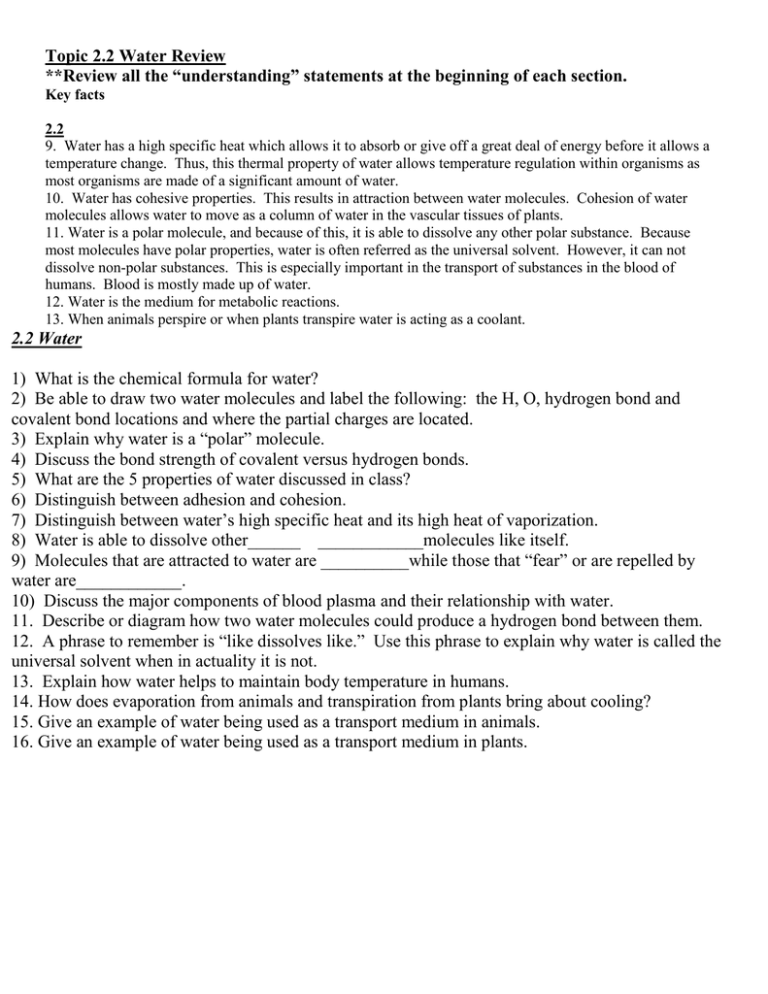
Topic 2.2 Water Review **Review all the “understanding” statements at the beginning of each section. Key facts 2.2 9. Water has a high specific heat which allows it to absorb or give off a great deal of energy before it allows a temperature change. Thus, this thermal property of water allows temperature regulation within organisms as most organisms are made of a significant amount of water. 10. Water has cohesive properties. This results in attraction between water molecules. Cohesion of water molecules allows water to move as a column of water in the vascular tissues of plants. 11. Water is a polar molecule, and because of this, it is able to dissolve any other polar substance. Because most molecules have polar properties, water is often referred as the universal solvent. However, it can not dissolve non-polar substances. This is especially important in the transport of substances in the blood of humans. Blood is mostly made up of water. 12. Water is the medium for metabolic reactions. 13. When animals perspire or when plants transpire water is acting as a coolant. 2.2 Water 1) What is the chemical formula for water? 2) Be able to draw two water molecules and label the following: the H, O, hydrogen bond and covalent bond locations and where the partial charges are located. 3) Explain why water is a “polar” molecule. 4) Discuss the bond strength of covalent versus hydrogen bonds. 5) What are the 5 properties of water discussed in class? 6) Distinguish between adhesion and cohesion. 7) Distinguish between water’s high specific heat and its high heat of vaporization. 8) Water is able to dissolve other______ ____________molecules like itself. 9) Molecules that are attracted to water are __________while those that “fear” or are repelled by water are____________. 10) Discuss the major components of blood plasma and their relationship with water. 11. Describe or diagram how two water molecules could produce a hydrogen bond between them. 12. A phrase to remember is “like dissolves like.” Use this phrase to explain why water is called the universal solvent when in actuality it is not. 13. Explain how water helps to maintain body temperature in humans. 14. How does evaporation from animals and transpiration from plants bring about cooling? 15. Give an example of water being used as a transport medium in animals. 16. Give an example of water being used as a transport medium in plants.


